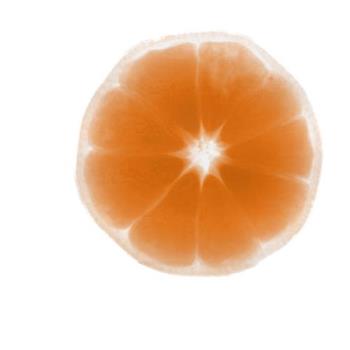The benefits of eating oranges
By jasjon
@jasjon (252)
Philippines
December 14, 2006 12:36am CST
All citrus fruit are excellent sources of Vitamin C, which helps to maintain the body's defense. Flavonoids are found in oranges. These are thought to reduce the risk of some cancers. Citrus fruits can improve blood circulation and lower blood cholesterol levels.
How many oranges should you eat?
These can be eaten freely. Two or three citrus fruits can provide the body with 20 percent of its daily potassium requirements.
Maximizing the benefits of oranges
Citrus fruits are best eaten peeled and raw. This is more beneficial than drinking fruit juice. It is important also to eat the skin around the segments.
3 responses
@anandsaab (590)
• India
15 Dec 06
* Orange juice, one of the commodities traded on the New York Board of Trade. Brazil is the largest producer of orange juice in the world, followed by the USA.
* Sweet orange oil, a by-product of the juice industry produced by pressing the peel. It is used as a flavouring of food and drink and for its fragrance in perfume and aromatherapy. Sweet orange oil consists of about 90% d-Limonene, a solvent used in various household chemicals, such as to condition wooden furniture, and along with other citrus oils in grease removal and as a hand-cleansing agent. It is an efficient cleaning agent which is environmentally friendly, and much less toxic than petroleum distillates. It also smells more pleasant than other cleaning agents.
* The orange blossom, which is the state flower of Florida, is traditionally associated with good fortune, and was popular in bridal bouquets and head wreaths for weddings for some time. The petals of orange blossom can also be made into a delicately citrus-scented version of rosewater. Orange blossom water is a common part of Middle Eastern cuisine.
In Spain they dry the falled blossom then use it to make tea
* Orange blossom honey, or actually citrus honey, is produced by putting beehives in the citrus groves during bloom, which also pollinates seeded citrus varieties. Orange blossom honey is highly prized, and tastes much like orange.
* Marmalade, a conserve made usually with Seville oranges. All parts of the orange are used to make marmalade: The pith and pips are separated, and typically placed in a muslin bag where they are boiled in the juice (and sliced peel) to extract their pectin, aiding the setting process.
@vishnukompella836 (160)
• India
14 Dec 06
Oranges are widely grown in warm climates worldwide, and the flavours of orange vary from sweet to sour. The fruit is commonly peeled and eaten fresh, or squeezed for its juice. It has a thick bitter rind that is usually discarded, but can be processed into animal feed by removing water using pressure and heat. It is also used in certain recipes as flavouring or a garnish. The outer-most layer of the rind is grated or thinly veneered with a tool called a zester, to produce orange zest, popular in cooking because it has a flavour similar to the fleshy inner part of the orange. The white part of the rind, called the pericarp or albedo and includes the pith, is a source of pectin and has nearly the same amount of vitamin C as the flesh.
Oranges and orange juice.Products made from oranges include:Orange juice, one of the commodities traded on the New York Board of Trade. Brazil is the largest producer of orange juice in the world, followed by the USA.
Sweet orange oil, a by-product of the juice industry produced by pressing the peel. It is used as a flavouring of food and drink and for its fragrance in perfume and aromatherapy. Sweet orange oil consists of about 90% d-Limonene, a solvent used in various household chemicals, such as to condition wooden furniture, and along with other citrus oils in grease removal and as a hand-cleansing agent. It is an efficient cleaning agent which is environmentally friendly, and much less toxic than petroleum distillates. It also smells more pleasant than other cleaning agents.
The orange blossom, which is the state flower of Florida, is traditionally associated with good fortune, and was popular in bridal bouquets and head wreaths for weddings for some time. The petals of orange blossom can also be made into a delicately citrus-scented version of rosewater. Orange blossom water is a common part of Middle Eastern cuisine.
In Spain they dry the falled blossom then use it to make tea
Orange blossom honey, or actually citrus honey, is produced by putting beehives in the citrus groves during bloom, which also pollinates seeded citrus varieties. Orange blossom honey is highly prized, and tastes much like orange.
Marmalade, a conserve made usually with Seville oranges. All parts of the orange are used to make marmalade: The pith and pips are separated, and typically placed in a muslin bag where they are boiled in the juice (and sliced peel) to extract their pectin, aiding the setting process.
Since oranges are susceptible to frost damage, growers commonly use sprinklers to coat them with ice when temperatures go below freezing. This practice protects the crops by regulating temperature.









